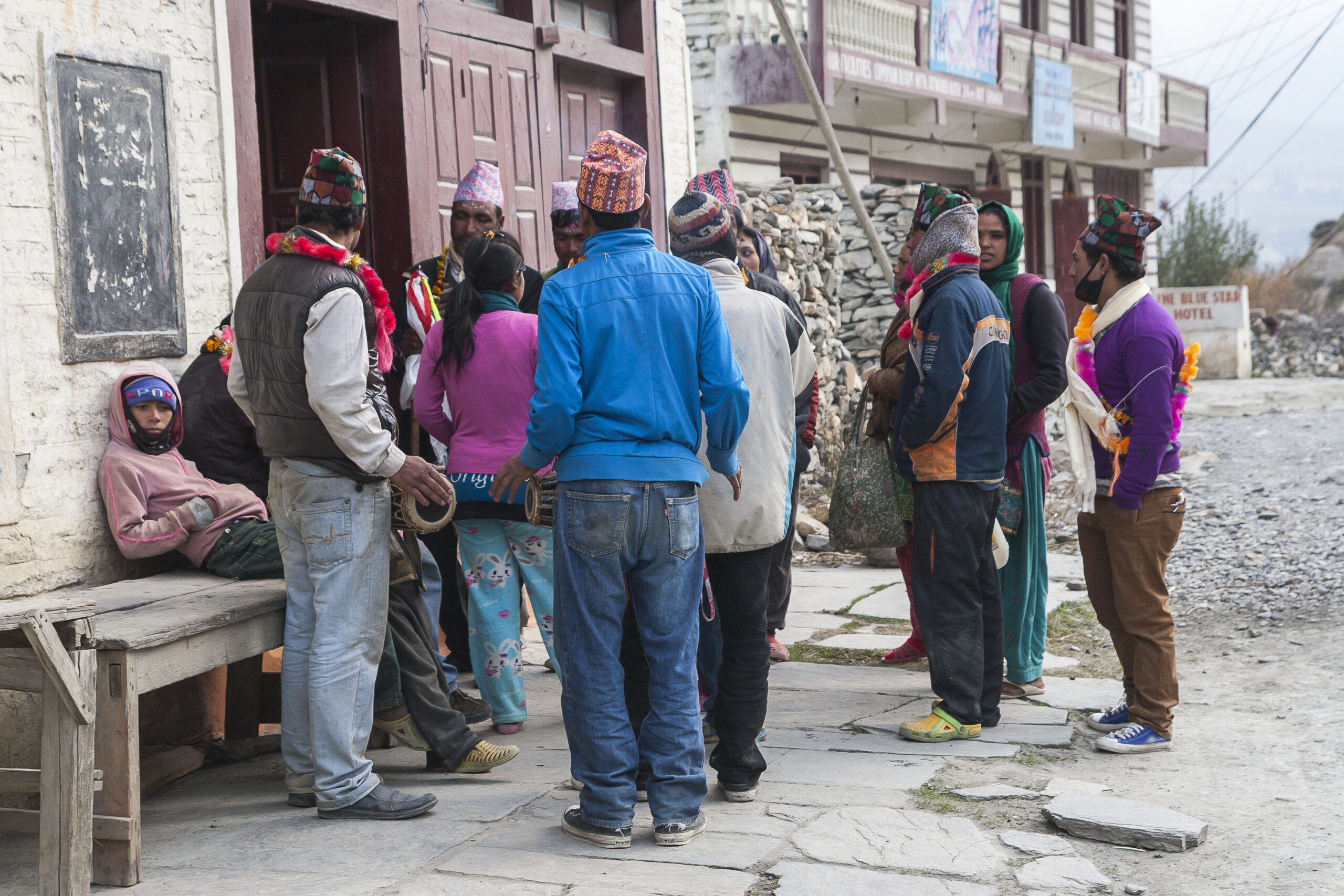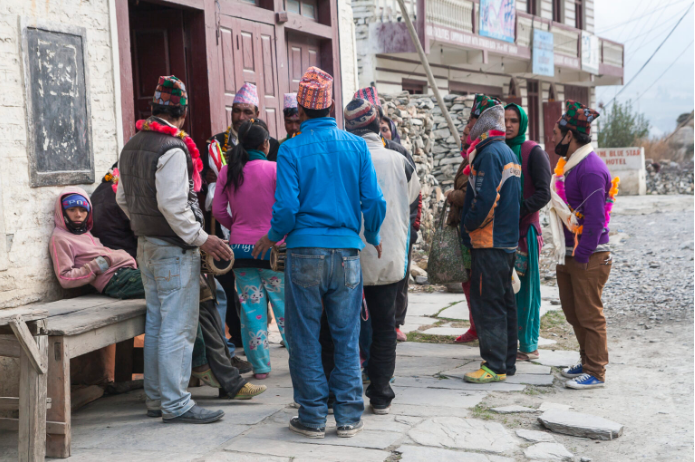
Nepal has encountered a number of expected and unexpected shocks in its economy caused by natural disasters, political changes and financial crisis. The great earthquake and border blockades in 2015 were an unexpected shock for Nepal. The earthquake destroyed important infrastructures, human settlements and around nine thousand people lost their lives all over the country. Thereafter, in the course of political change and promulgation of a new constitution in Nepal, India imposed a border blockade, which created a state of catastrophe with lack of food, medicine, fuel and necessary items for many months until the blockade ended. As Nepal was in process to recover from these shocks and trying to reenergize the crumbled economy by reconstructing infrastructures destroyed by the earthquake, unfortunately the COVID-19 pandemic, in 2019 was another great shock which hit the country in unbearable scale with considerable numbers of people lost their lives. Recently, after five decades, Nepal suffered the most devastating heavy rainfall during the monsoon this September, with excessive floods and landslides, over two hundred people lost their lives and it damaged infrastructure and properties equivalent to billions of rupees. In addition, Nepal is also suffering from other economic and financial shocks in its economy referred to as economic growth constraints, rising financial stress, trade disruptions, high dependence on international financial institutions and fighting in the middle east .
First start with economic growth constraints as Nepal’s poverty and underdevelopment are directly interlinked with the economic slowdown. It has a tendency of high fluctuations in economic growth with unexpected ups and downs, which could hardly support the required level of development and cope with the businesses, unemployment and recession as well. The next sector, which is less supportive and creates shock to the economy, is the financial sector. As a result of weak growth rates, high fluctuations in interest rates, elevated debt levels and exchange rate volatiles, the contribution of the financial sector in overall investment in productive sectors is not encouraging and the country is facing the shock of lower investment in its developmental and productive sectors as well. Rising inflation has also made life of people more difficult.
The next shock has been created by the global trade disruptions through growing number of trade restrictions, trade barriers and protective policy of developed countries especially neighboring countries are to be blamed, to great extent for widening the trade gap of Nepal. The manufacturing and the agriculture sectors, which were previously performing better for import substitution and export promotions, now they have been crumbled by shocks of global trade fragmentation. As Nepal’s agriculture sector is not performing well and if India lacks foodstuff itself and stops exporting it for long periods, Nepal might be in a crisis of food insecurity shock, which Nepal is facing temporarily from time to time.
Another shock, which has both positive and negative shocks is Nepal’s high dependence on policies and dictations of international financial institutions. Nepal cannot ignore that the external assistance is going to be more political and strategic rather than only economic. The world financial system has been divided in many blocks with their own financial institutions and Nepal’s overall investment climate has been suffering from their power play with increased complexities as investment shock.
Likewise, the next shock for Nepal has been the conflicts in the Middle east countries as Nepal’s GDP is heavily dependent on remittances with two third of Nepalese laborers being employed in the countries of the Middle east. Nepal receives more than fifty percent remittances from the region. A strong shock is expected in an unexpected and sudden way in the Nepalese economy as conflicts continue for long periods.
Nepal has a low ability to manage these shocks and its effect would create further shocks in the other sectors of the economy. For example, with its effects, the production across the economy would be more difficult, costly, or some industries would heavily curtail the production or import limitations may create severe supply shocks to the economy. Moreover, it may also produce shocks to the financial sector with a stock market crash, a liquidity crisis in the banking system, unpredictable changes in monetary policy, or the rapid devaluation of a currency as well. Lastly, a technology shock could result from the level of use of advanced technology in productivity such as modern computers, advanced technology and efficient machinery in production across different occupations and industries, which Nepal lacks.
Economic shocks could be both positive as well as negative depending on its support to the systems. For example, the 2008 financial crisis in the US was a negative economic shock that led to a global recession, however the rapid growth of the internet in 1990 was a positive shock that opened new business and opportunities. Shock absorption capacity is the ability of an economic system to resist both expected and unexpected shocks by effective and efficient plans, programs , policies and performances. Why is the Nepalese economy having a lower capacity and inability to resist the shocks? There could be many reasons, however, the major blame goes to politicians who often reprioritize policies that deliver immediate results for their personal and political support , even if they have long-term negative consequences. Similarly, the powerful special interest groups lobbies can influence policy decisions to benefit specific industries or groups, even if it harms the broader economy. In many cases, even good policies can be difficult to implement if they are not widely supported by the public, several infrastructural projects in Nepal are suffering from it.
In addition, economic policies in Nepal often also fail to function well due to complex economic systems, inadequate data, implementation challenges, conflicting interests, and the inherent difficulty of predicting future economic conditions; leading to policies that may not be effectively designed, targeted, or executed to achieve their intended goals. Rapid changes in market conditions can also quickly render policies obsolete. Moreover, the government often lacks accurate information about the economy, making it difficult to accurately assess the impact of policies. It also lacks the necessary bureaucratic infrastructure and stability of leadership to effectively implement policies. The complex tax systems with loopholes can lead to unfair tax burdens and reduced government revenue. Lastly, Nepal must seriously reform to minimize economic shocks through a variety of policy changes, such as – improving fiscal discipline, strengthening the financial sector by adjusting interest rates, changing tax policies, diversifying the production and export base, improving the business climate, providing financial aids to affected industries, focusing on areas of comparative advantage as well. It is important for Nepal to introduce second-phase of economic reform to accelerate growth momentum by reforming critical areas such as infrastructure, governance, human capital development, and developing an environment which encourages and supports the private sector as well

